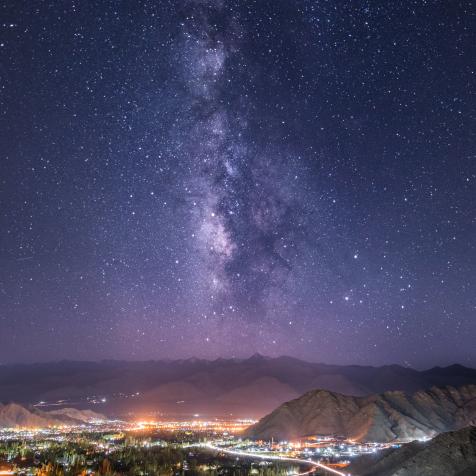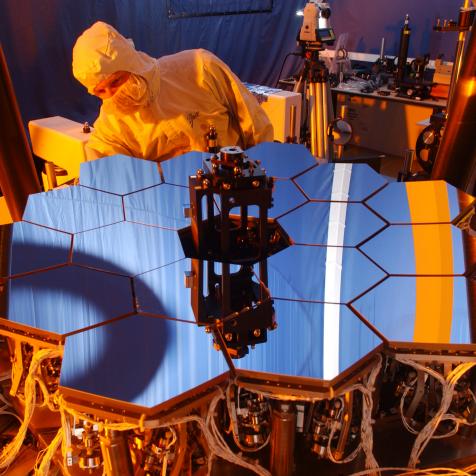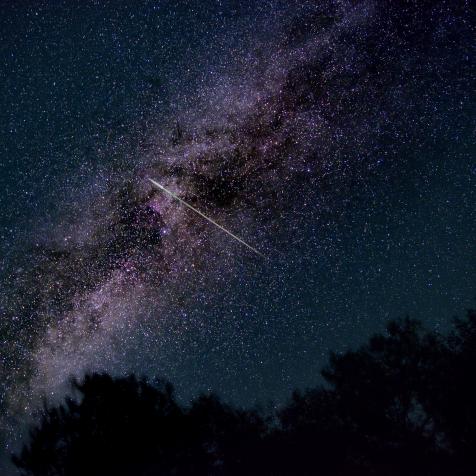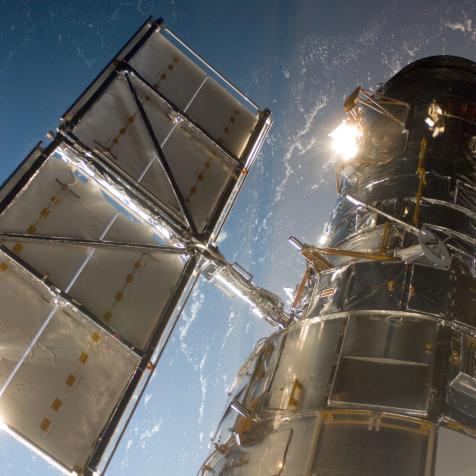
NASA, ESA, and T. Brown (STScI)
Small Galaxies Matter Too

Long ago, our universe was without stars. When that first generation ignited, it completely transformed the cosmos, ripping away the veil of neutral gas that had persisted for hundreds of millions of years. This process, called reionization, is largely mysterious to astronomers. But new research is revealing that the smallest of galaxies may have played the biggest of roles.
Long, long ago (and I mean long ago), our universe was much smaller, much hotter, and much denser. Over 13 billion years ago, our universe was a mere one thousandth of its present size and had an average temperature of thousands of degrees Kelvin.
This hot, dense soup was not a place to find galaxies or even stars. It was just one big never-ending plasma, which is the state of matter where electrons are ripped away from atomic nuclei.
But then the universe got bigger, got looser, got cooler. When our cosmos was about 380,000 years old, it cooled to the point where the electrons could settle into their atomic homes, rendering the gas in our universe neutral.
And dark. Very dark. Cosmologists call this epoch, which lasted for a few hundred million years, the “dark ages”, appropriately enough.

ESA/Hubble & NASA
The subject of this NASA/ESA Hubble Space Telescope image is a dwarf galaxy named NGC 5949. Thanks to its proximity to Earth — it sits at a distance of around 44 million light-years from us, placing it within the Milky Way’s cosmic neighbourhood — NGC 5949 is a perfect target for astronomers to study dwarf galaxies.
Eventually, matter began to coalesce to form the first stars and galaxies (the “cosmic dawn”). Through some as-yet-understood process, the radiation from those first stars blasted through the universe, ripping the neutral gas apart and returning it to its original plasma state – a state it has largely maintained in all the eons since.

NASA, ESA, and Hubble Heritage Team (STScI/AURA, Acknowledgment: T. Do, A.Ghez (UCLA), V. Bajaj (STScI)
Hubble's infrared vision pierced the dusty heart of our Milky Way galaxy to reveal more than half a million stars at its core. At the very hub of our galaxy, this star cluster surrounds the Milky Way's central supermassive black hole, which is about 4 million times the mass of our sun.
The biggest difficulty with trying to study this epoch in the history of our universe is that it’s incredibly far away from us, and our telescopes just aren’t yet good enough to directly witness this grand transformation. But new telescopes are on the case, and beginning to paint the initial sketches that will eventually (hopefully) become a full portrait.
And that initial sketch seems to involve a lot of small galaxies. New observations show that small, compact galaxies are capable of amazing feats of star formation, pumping out many more stars every year than galaxies like our own Milky Way.

NASA/JPL-Caltech/ESA/Spitzer/P. Oesch/S. De Barros/ I.Labbe
This deep-field view of the sky, taken by NASA's Spitzer Space Telescope, is dominated by galaxies - including some very faint, very distant ones - circled in red. The bottom right inset shows one of those distant galaxies, made visible thanks to a long-duration observation by Spitzer.
Among that star formation frenzy is a population of large, hot, radiation-blasting baddies. For the first time, astronomers caught those big stars from a small galaxy pumping out enough radiation to blast out the neutral gas surrounding it.
Dive Deeper into the Cosmos
Journey Through the Cosmos in an All-New Season of How the Universe Works
The new season premieres March 24 on Science Channel and streams on discovery+.
This kind of break-out could be beginning stages of the reionization of the universe that took place when it was only a few hundred million years old, shortly after the formation of the first stars and galaxies. Over time, it’s thought, expanding bubbles of radiation from small galaxies would go on to reionize all the gas in the universe.
Not too bad for a small galaxy.
Paul M. Sutter
Paul M. Sutter is an astrophysicist at Stony Brook University and the Flatiron Institute, host of Ask a Spaceman and Space Radio, and author of How to Die in Space.




















